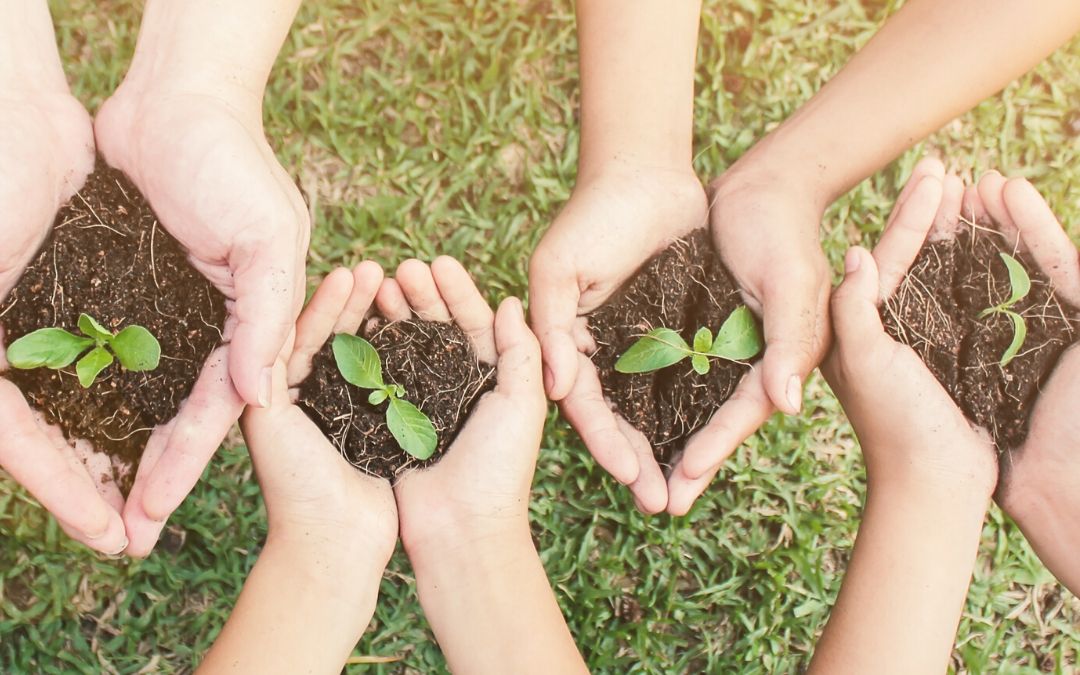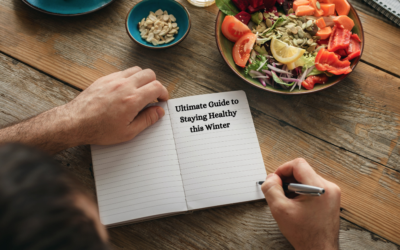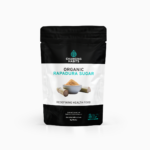As a young mum some 30 years ago, I was very strict about what my children consumed, not only when it came to food, but also when it came to education (I home-schooled for a time), television (no internet back then) and games (just the Game Boy).
My three children (now young adults) were rarely sick, and for the most part were a well behaved lot. Let them go to a birthday party and things changed. I’d pick them up from the party and if they didn’t vomit, they’d be unruly until I finally got them into bed.
I was lucky – I was educated, not only from my own parents but also because I chose to study pre-medicine, anthropology, nutrition and anatomy at university. When I was pregnant with my first child, I questioned everything from ultrasounds, to internal examination, Vitamin K, vaccines and oxytocin. I questioned Apgar procedures and how they were done – I wasn’t too happy with a thermometer up my newborn baby’s arse.
I also questioned the use of medications, especially antibiotics and ones that reduced fevers like paracetamol. You may think I was a neglectful mother, but I had a full understanding of the human body. I knew it had an innate intelligence and when given the right resources (food, sunlight, water, connection (love), movement, play and nature), it knew how to be healthy. Instead of looking at fevers and childhood illnesses as sickness, I saw them as the body having a health expression and doing what it needed to do in order to kill the bacteria or virus, mend the broken bone, purge poor food or whatever else to stay in homeostasis. I also found that after these childhood illnesses, my children would either have a growth spurt physically and/or mentally.
Of course if my children were in a life-threatening situation then it was straight to the emergency room for the amazing life-saving doctors to do what they do best, that is to save lives in an emergency. My son broke several bones in his football and motor bike career and my daughters both had minor injuries requiring stitches.
My children are now 30, 28 and 26 and I’m happy to say that they got through their entire childhood and teenage years without need for any medications: no painkillers, no fever reducers, no antibiotics…nothing.
It may be anecdotal but it’s my story. And my story is about living the best that we can and making sure that our children, our future leaders, can make the right choices by being the best they can be mentally and physically.
Childhood around the world is in crisis. Our children have unplugged from the natural world and have been forced into a world of ultra-processed foods, filled with synthetic additives, flavours, colours, thickeners, fillers, binders, acidity regulators and fortification by man-made vitamins and mined minerals. They have gone from playing outside to watching screens, their life is scheduled with little informal play, and snow plough and helicopter parents are the new norm.
Up to 45% of children have life-long chronic diseases, autism, hyperactivity, asthma, allergies, autoimmune diseases, depression and anxiety. I’m a 1960’s baby. I remember my childhood and teenage years well and I don’t remember any of my friends or their families suffering from any of these conditions. But now in a classroom of 25 students, almost half will have a chronic illness, eight will be overweight, four will have a learning disability, two will have asthma, two will have ADHD, two will have food allergies and the chances of one child having autism is 62.5% in Australia, 69% in the USA and 36% in the UK. [An estimated 1 in 40 children in Australia, 1 in 64 children in the U.K., and 1 in 36 children in the U.S. have an autism spectrum disorder (ASD). (1)]
Dr Toby Rogers from Sydney University, the author of The Political Economy of Autism, points to 5 major classes of toxicants that increase autism risk:
1. Mercury from coal fired plants and diesel trucks (consider where you live)
2. Plastic ingredients (reduce your plastic use, use glass for storage containers)
3. Herbicides and pesticides including Roundup (glyphosate), carbamates, organophosphates, organochlorine and pyrethroid (buy spray-free and organic produce and food)
4. EMF’s and RFR’s (consider phone use and where phone towers are situated)
5. Pharmaceuticals including paracetamol, SSRIs (selective serotonin reuptake inhibitors) and vaccines.
Dr Christopher Exley from Keele University has compelling evidence to suggest that aluminium is linked to autism. Consider your use of aluminium in antiperspirants, vaccines, aluminium cooking pots, trays and aluminium foil.
Doing the best we can to avoid these modern-day toxicants would be prudent. Having strategies is key to reducing the incidence of autism worldwide.
You might also like to read this guide on diet and autism here.
How Could We Have Got It So Wrong?
Being a nutritionist, my expertise is food ingredients, how they are made, what they do to the body and what are the alternatives. It’s sad to say that when I began my studies in nutrition 40 years ago that things have not improved, but ultimately have become devastating to human health, both physically and mentally.
The more we learn, the more we realise the mistakes we have made about the food we are eating, but money is involved and it’s not going to change on a national or state or even grocery-store level. For things to change, you must change: not the government, not your council, not your grocery store, but you. Become educated about food – read my book Lab To Table – and make better choices for your table. Understand what the chemical industry (about five companies around the world) are doing to our food and how they are duping the food industry (large and small producers) into using them.
The chemical companies make food additives that can be added to a scarce amount of real food (sometimes no real food), making a product that tastes like food, smells like food, looks like food but really isn’t food. A really good example of this is the fake meat boom. There is nothing real in fake meat, it’s a bunch of chemicals added to ultra processed food items to make you think you are eating meat but in reality you are eating a shit storm of chemicals including polysorbate 80, propylene glycol, titanium dioxide (for whitening the fake chicken and fish meat), binders, fillers, starches and the new ‘darling’, soy leghemoglobin.
Natural flavours found in just about every certified organic and so-called health foods and drinks are a menace to health and an insult to our intelligence. There is nothing natural about them. They are anything from 48 to 100 chemicals mixed together to make you think you are eating a banana or a piece of meat. Natural colours are the same, they have less chemicals, but include excipients like propylene glycol and polysorbate 80.
Citric acid, an acidity regulator, sounds like it comes from citrus fruit but really it is made from a genetically modified mould – this is known as bioengineering or synthetic biology. More and more additives and supplements are being made with synthetic biology and this doesn’t have to be declared on food labels.
What is worrying is that many of these new synthetic biology additives haven’t been safety tested for more than 30 days. Rats and mice are usually the victims. Not only that, but safety testing is only done on one food additive at a time, never combinations of additives. You might like to go to your pantry or fridge and start looking at the ingredients on your packaged foods and drinks to see if you can find a food that has only one additive. More likely than not the food will have many food additives, so essentially you are a lab rat, part of a food experiment where we actually know the results – physical and mental illness across all age groups (and this will continue to increase). When you inflame the body, the brain inflames with it as they are connected by major nerves and blood vessels in the neck – they are definitely not separate.
Fooling with food is fooling with the physical and mental health of humans. Humans and domestic pets are the only species on the planet with chronic illness; no other species eats ultra processed foods nor lives completely separated from nature (sun, clean air, grounding, forests).
The solution isn’t hard. It’s a step-by-step, habit-by-habit process of switching your ultra-processed food to real food, the food your evolutionary body yearns for and thrives on.
Three Simple Steps to Better Health
Step one: Have foods in your fridge and pantry that contain only one ingredient. From those foods you can make thousands of recipes, but it means you have to get back into the kitchen to feed and nourish your family to heal this nation, and our children for future generations.
Step two: Reduce your use of the five groups of toxicants and aluminium (mentioned above).
Step three: Know where your food comes from. Many farming practices are dubious at best and kept secret at worst (like spraying our crops with chemicals that have the ability to kill the microbiome as well as using GM seeds). At least if we are told the truth then we can make decisions based on knowledge. Making a decision to find out where the food you eat comes from not only helps you and your family, but helps your local regenerative, organic, biodynamic, permaculture farmer, which in turn helps our soils, land and climate. Or you can become the gardener and plant foods in your own backyard.
It’s easy in most parts of the western world to find a farmers market. They are very popular and more and more farmers are realising that direct sales are more profitable than going through a conglomerate grocery chain. Foods that you can buy locally and ethically are eggs, fruit, vegetables, herbs, some nuts, some grains, some legumes, meat, poultry, game, fish and dairy. Things that you may need to buy from further away might include spices, some legumes, chocolate, salt, nuts and grains that may not be in your region.
Changing Habits is a food, education and consulting company. We look for the FOREST: Foods that are Organic, Regenerative, Ethical, Sustainable and Trusted. If we do this as individuals then we are part of the solution, not part of the problem. You see everything begins and ends with food. How we grow our foods, how we source our foods, how we consume our foods (as a family around the dinner table) and how we celebrate with food, all have a cumulative effect. These factors can not only improve our family’s mental and physical health, but also that of our community. In fact, the knock-on effect can be worldwide.
It’s up to us to take responsibility for the predicament we are in and to make a stand to improve our own health and that of our children. After all, they are the future leaders of this planet.
Cyndi O’Meara
Nutritionist and bestselling author, founder of Changing Habits, producer of the documentary – What’s With Wheat, founder of The Nutrition Academy, co-founder of the Changing Habits Farm, mum of 3, waiting to be a grandmother.








Hi Condo,
I love this article. Thank you for publishing it.
While busy cleaning up my family’s diet over the last 12 years, I’ve come to agree with your FOREST philosophy wholeheartedly.
After starting to watch the Netflix documentary “Rotten: Bitter Chocolate” – I’ve started to wonder if “ethical chocolate” is available (besides Australian chocolate from north QLD)
Can you please tell me more (Or is it on your website And I haven’t found it – my apologies if that is the case) about the circumstances from where you buy your cacao?
Much appreciated
Hello! Thanks for getting in touch and for your kind words 🙂 Our supplier in Peru sources cacao from more than 15,000 family-owned farms. They are organic, Fairtrade and promote environmentally-sustainable practices. Howard has personally visited the supplier too! As always, you can be assured that we research our suppliers thoroughly to ensure they meet our strict quality guidelines and that our products contain absolutely no nasties – the Changing Habits way! Kerry.